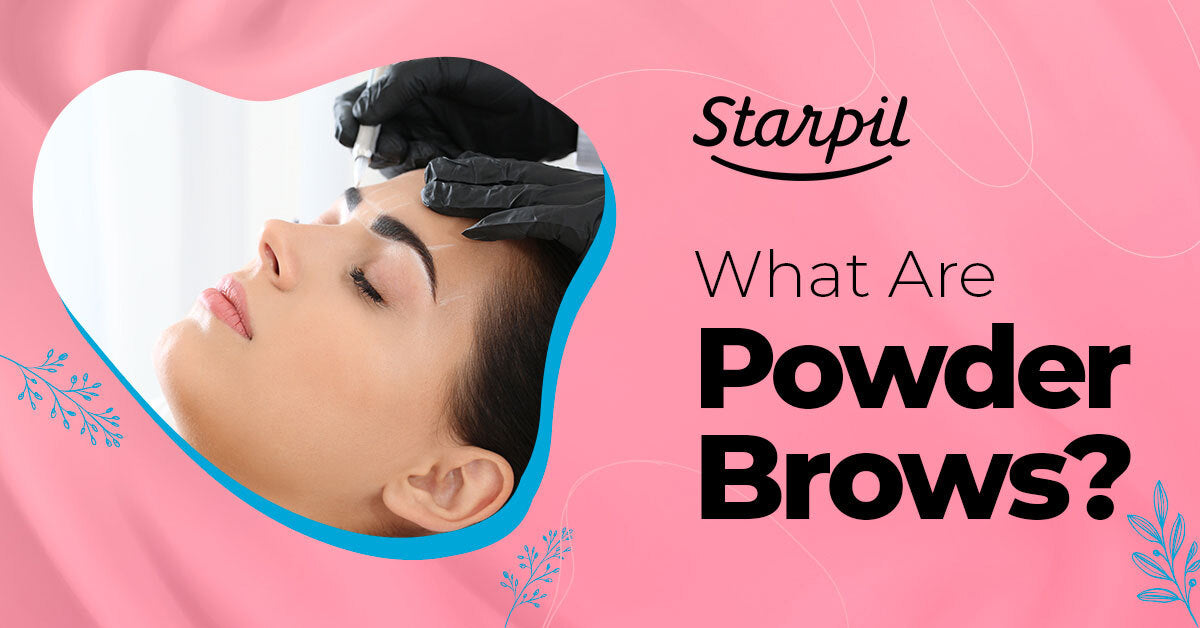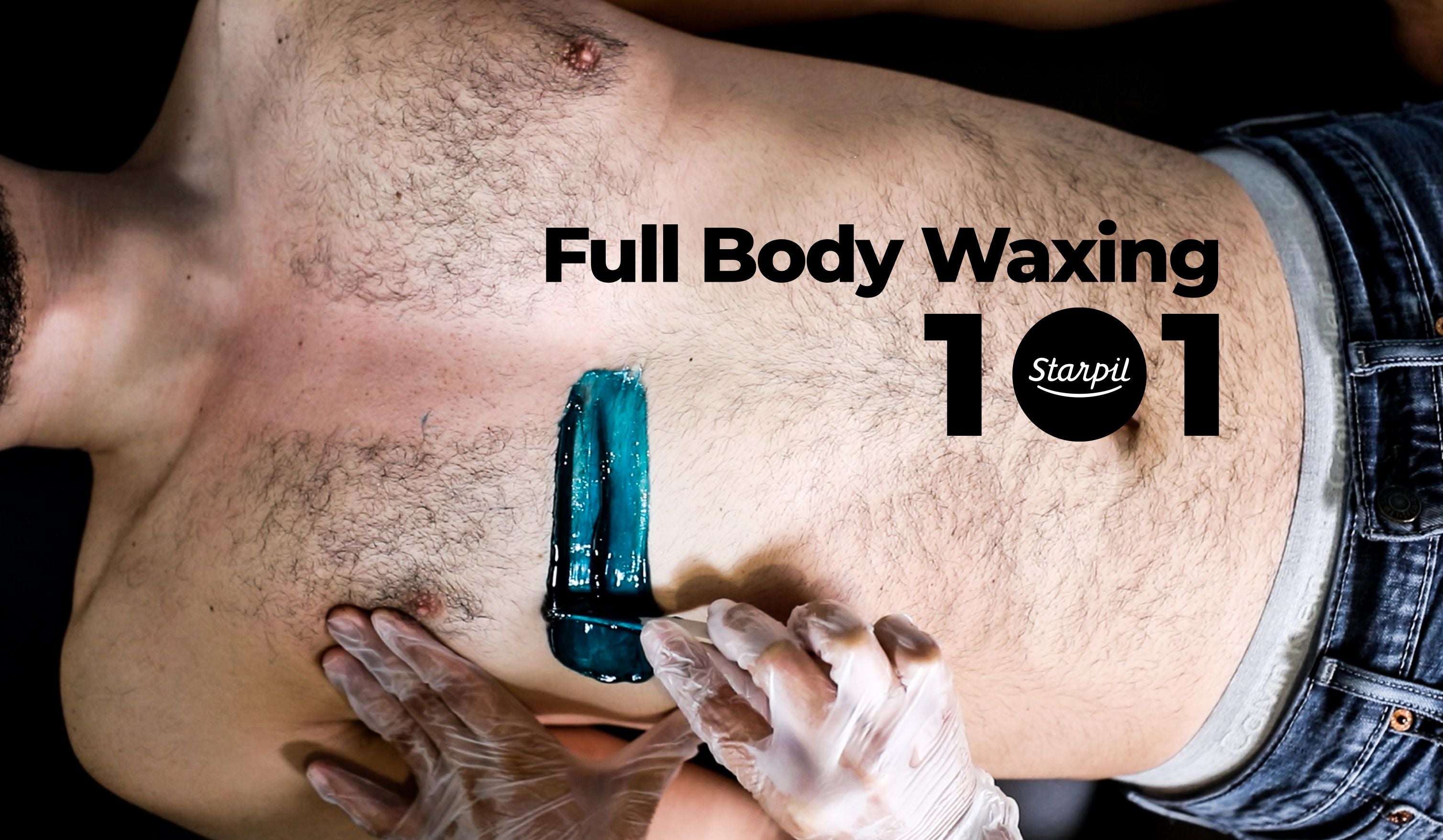The Complete Guide to Hair Growth After Waxing

When it comes to the subject of hair growth, especially in relation to waxing, a lot of people might just leave it at allowing hair to grow to “around the size of a grain of rice” (or about ¼-inch in length) before a waxing appointment. Though this may be true, there’s a lot more to hair growth than just guessing how long to leave in between waxes.
If you’re wondering “How long does hair have to be to wax?”, we’ll be getting to the root of all the questions clients and estheticians alike have regarding hair growth and waxing. How fast does hair grow? How long does it take for hair to grow before it can be adequately waxed? How does hair grow? Does waxing reduce hair growth? No matter what you want to know about how hair growth impacts waxing, we’ve got you covered.
How Hair Type Affects Waxing
When figuring out what the right waxing regimen is for your clients (or for you!), there are many factors to take into account regarding hair type, before you address hair length before waxing. How does thickness affect an optimal hair length for waxing?
Thinner hair might be able to get away with waxing at slightly shorter lengths on the upper lip or sideburns, but thicker, courser hair will need to get to or above the average grain of rice to even be considered for waxing.

Finer hairs have a higher chance of being removed while still a little on the shorter side because their base isn’t as thick and grounded. Thicker hair has more of a substantial root, so waxing it when too short runs the risk of hair breakage, potentially leading to ingrown hairs or acne after waxing. Even if you do manage to grab some short, thick hairs from the root, that entire area can be thrown off-track, causing patches of hair growing back in different hair growth cycles.
Due to this difference in hair growth cycles, waxing hair when it’s too short will make some of the hairs grow back within a couple of days (and in an uneven, prickly wax job), and others not for a week or two. This can turn into a never-ending cycle of mixed growth patterns, ingrown hairs, and breakouts.
When hair is at the right length, wax can spread more cleanly. When hair is too long, it can turn into a matted mess during a wax application and be considerably more painful upon removal. It also makes removal a crapshoot of hairs being ripped out in clumps instead of evenly throughout the area. This again can put hair in an uneven growth pattern that can take months to get back on track.
READ: Waxing vs. Shaving: What is the Best Method for Hair Removal?

How Long Should Hair be to Wax?
To perform a waxing service, hair should be at least ¼ inch or longer. Having hair this length will ensure that the wax can properly grip and remove hair at the root.
For first-time waxers, or those who may have regularly shaved or used another form of hair removal in the past, you’ll want to leave at least 2 weeks in between your last hair removal session and your waxing appointment in order to leave enough time for hair to grow out.
Naturally, this also depends on how thick, coarse, or fine your hair might be, as well as how fast it grows. You might have to leave more time in between your waxing appointments if your hair grows slower than most.
Wondering if your hair is long enough? To get a rough estimate, try seeing if you can get a grip on your hair with your fingers (but don’t be too rough!). If you can’t get a hold of your hairs, they may not be long enough to remove yet.
Of course, figuring out how long hair should be to wax, or how long to leave in between hair removal sessions will get easier the more you do so, and will also be easier when a professional can give you their expert advice and estimate accurately based on your hair type.
Once you've received a successful wax, getting it back to ¼ of an inch hair growth for waxing should take a minimum of at least two weeks on finer hair areas like the face, and four to six weeks on thicker hair, as found in the pubic region.
Again, this depends on how fast and thick the hair grows, as well as which area of the body is being waxed. Since facial hair can grow faster and finer than other regions, an upper lip wax every other week isn't unheard of, but a Brazilian wax shouldn't be done more than every four to six weeks because the hair there might not be long enough to remove before then.
READ: How to Do a Manzilian Wax: The Complete Guide
How Does Hair Grow?
There are three hair growth cycles or phases. These are known as the growth phase (anagen), the stagnation phase (catagen), and the shedding phase (telogen). Remember, not all of the hair in a given area is in the same phase. 
For example, the first hair growth cycle, or the anagen phase, happens on 80%-90% of the body and lasts from three to five years. Hair in the anagen phase is actively growing (hair on the head can grow up to two inches in a month) and is usually okay to be waxed every four to six weeks.
It’s in this anagen phase where keratin continually builds upon itself directly from the bulb and is rooted cozy and deep in the follicle. Estheticians want to get hair in the anagen phase at the root when waxing because it makes for long-lasting hair removal, as well as finer and weaker regrowth.
About 10%-20% of hair then moves into the second hair growth phase, known as the catagen phase. This phase lasts for about ten days. This is when the hair detaches from the body's blood supply and stops building keratin (aka, growing), and then begins the shedding process. Waxing in the catagen phase doesn't get to the root, but does get the loose club hairs out to welcome the telogen phase.
The telogen phase lasts about 100 days, and is when 10%-20% of body hair sheds and the growth process pauses before moving back into the anagen phase.
How Ethnicity Affects Hair Type
Your ethnicity can also impact your hair type, hair texture, or how fast your hair grows.
For example, people with Asian bloodlines usually have round hair follicles resulting in straighter hair that grows faster and thicker than other ethnicities. These hair types can have varied hair growth cycles where hair stays in the anagen phase longer. They also might experience more growth in-between waxing.
African ethnicities have flatter, more oval follicles resulting in curlier hair and slower growth but thicker, coarse hair types.
European ethnic groups generally have smaller follicles, thinner hair, and slower hair growth rates.
How Climate Impacts Hair Growth
This is a quick one: Hair grows faster in warmer climates than colder ones.
How to Educate Clients on Hair Growth Factors

Prior to a waxing service, clients with hair longer than 1/2-inch long on areas like the bikini line or underarms will need trimming, but don't let them do it themselves. Depending on your comfort level, it's best that you take care of that personally.
Because of the angles, they might not be able to cut their body hair evenly, may go too short, not cut enough, or not be able to gauge if the hair is at an optimal waxing length.
They don't need to be embarrassed; you've seen it all and want to make sure that you are now in charge of all of their hair removal needs to get them onto the right track safely and effectively.

Before they leave, you can use everything you know about hair growth after waxing and hair growth cycles to determine their next appointment. Again, the following factors apply.
- Ethnicity
- Sex
- Climate
- Waxing area(s)
A consistent waxing schedule can get hairs on the same page and ultimately makes for smoother, longer-lasting hair removal. If clients are shaving in-between sessions, they are more prone to hair breakage, ingrown hairs, and acne after waxing—and getting their growth patterns out of sync again.

New waxing clients dedicated to getting hair after waxing onto similar growth cycles need to ensure that they keep hair growth healthy and uninterrupted while preventing ingrown hairs prior to their next wax.
We recommend using Starpil’s “Hair Puller” Ingrown Hair Serum Spray, while simultaneously eating a diet rich in vitamin A, C, and E, B-vitamins, iron, zinc, magnesium, and proteins. It's best that they use Starpil Post-Intensive Care Lotion to keep skin balanced, nourished, and hydrated, in addition to their existing post-wax care routine.
After the new client's second or third session, Starpil Post-Wax Care Lotion and Starpil’s Post-Wax Oil, or other hair-growth retardant products can be used.
With consistent waxing appointments and proper at-home care, clients may see hair taking longer to grow back and growing in thinner than before. This means that they can schedule their appointments later and less often. Ultimately, if they follow proper hair growth education, it can make hair removal less expensive and healthier for them.
READ: Why Using Pre & Post-Wax Products is a MUST
Waxing too Soon Between Appointments
Over time, you might get a client or two that insist on emergency hair removal despite hair not quite being long enough. If you decide to take that challenge, we'd recommend going with the following:
- Use Starpil Pink Soft Wax on the facial areas or thinner body hair types. This wax is gentle on skin, while removing even the finest hairs.
- Use Starsoft Film Hard Wax on sensitive skin types on the legs or around the inner vulva, or butt crack on a Brazilian wax.
- This neurosensory formula is perfect for use on hypersensitive or aged skin, as reduces redness and inflammation in clients.
- Go for Black Film Hard Wax beans for all skin types on men or coarser areas on women.
w/ code HAIR-GROWTH
Final Thoughts
Learning how to understand clients’ hair types and hair growth cycles helps you to better determine and estimate hair growth after waxing, as well as better understand their growth patterns and how to educate them accordingly.
In the end, your waxing choices will all come down to your judgment calls based on what you know and how much you understand hair growth cycles.
Feel free to share this article with your wax salon team or others you would think would benefit from it!
FAQs | Hair Growth After Waxing
How long does it take for hair to grow back after waxing?
Hair typically takes between 3-6 weeks to grow back after waxing, though this timeline varies significantly based on individual factors. Your personal hair growth cycle, which is genetically determined, plays the most significant role in regrowth timing. Different body areas also regrow at different rates.
First-time waxers often notice quicker regrowth than those who wax regularly, as consistent waxing gradually weakens hair follicles, resulting in slower and sparser regrowth over time. Your hormonal balance significantly impacts growth rates; higher testosterone levels generally accelerate hair regrowth, which is why men and individuals with certain hormonal conditions may experience faster regrowth. Age influences regrowth timing as well—younger clients typically experience faster regrowth than older clients due to more active follicles. For optimal results and to maintain smooth skin, professional estheticians typically recommend scheduling regular waxing appointments every 4-6 weeks, adjusting this timing based on your personal regrowth pattern.
Why do I have stubble just days after waxing?
Experiencing stubble within days after waxing typically indicates one of several technical issues rather than unusually fast hair growth. The most common cause is hair breakage rather than complete removal; when hair breaks at or just below the skin's surface instead of being extracted from the root, it creates the appearance of rapid regrowth as the broken shaft quickly emerges. This breakage often occurs when hair is too short during the waxing process (less than ¼ inch), preventing the wax from properly gripping the hair shaft.
Improper waxing technique, such as pulling the wax in the wrong direction or at an incorrect angle, significantly increases breakage risk. Asynchronous hair growth cycles present another explanation; this is particularly common for first-time waxers whose hair growth has not yet synchronized through regular waxing.
Will waxing eventually stop hair from growing back?
Waxing does not permanently halt hair growth, but consistent long-term waxing significantly alters hair regrowth patterns over time. With regular waxing (every 4-6 weeks), most clients experience three progressive changes: hair gradually becomes finer in texture as repeated trauma to the follicle weakens its ability to produce thick hair shafts; growth becomes noticeably sparser as some percentage of damaged follicles stop producing new hairs completely; and regrowth timing typically slows, with longer intervals between visible hair emergence.
These changes result from cumulative damage to the hair follicle structures through repeated extraction, eventually causing some follicles to produce progressively finer hair before potentially becoming dormant. The extent of these changes varies significantly based on genetic factors, hormonal balance, age, and body area.
Why is my hair growing back thicker after waxing?
Contrary to the common misconception that waxing causes thicker regrowth, hair cannot actually grow back thicker after waxing. This perception typically results from several optical illusions and timing factors. When hair regrows after being removed from the root, the emerging tip has a blunt edge rather than the naturally tapered end of uncut hair, creating the illusion of thickness.
If breakage occurs during waxing rather than complete root removal, the remaining hair shaft continues growing normally from its base, failing to achieve the progressive thinning effect of proper waxing. Professional estheticians can address these concerns by educating clients about hair growth cycles and proper between-session maintenance.
What factors affect hair regrowth speed after waxing?
Multiple interconnected factors influence how quickly hair regenerates after waxing, creating significant variation among clients. Genetics plays a foundational role, determining your natural hair growth cycle length, follicle density, and hair shaft thickness.
Hormonal balance significantly impacts regrowth speed; elevated levels of androgens (male hormones present in all genders) accelerate hair production, which explains why conditions like polycystic ovary syndrome (PCOS), adrenal disorders, or hormonal fluctuations during pregnancy or menopause can dramatically alter regrowth patterns.
Your waxing history creates cumulative effects: hair growing for the first time after waxing usually returns faster than hair that has been repeatedly waxed over months or years. Body region significantly influences regrowth due to varying follicle depths and types across different areas.
BE A PART OF THE #STARPILFAM!
- To get The Waxopolatin in your inbox, subscribe here for all the fun!
- Join other professional #starpilfam members, join The World of Waxing, our Facebook. (Have your license ready).
- Get all the Starpil hook-ups with Esthie Bucks for rewards on your favorite waxing products.
- Group and follow us on Instagram @starpilwaxUSA for all of the waxing gossip and to earn free Esthie Bucks!











